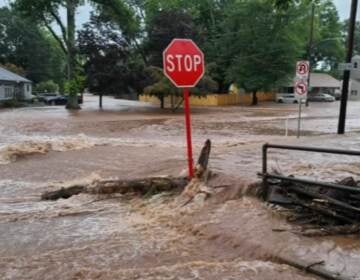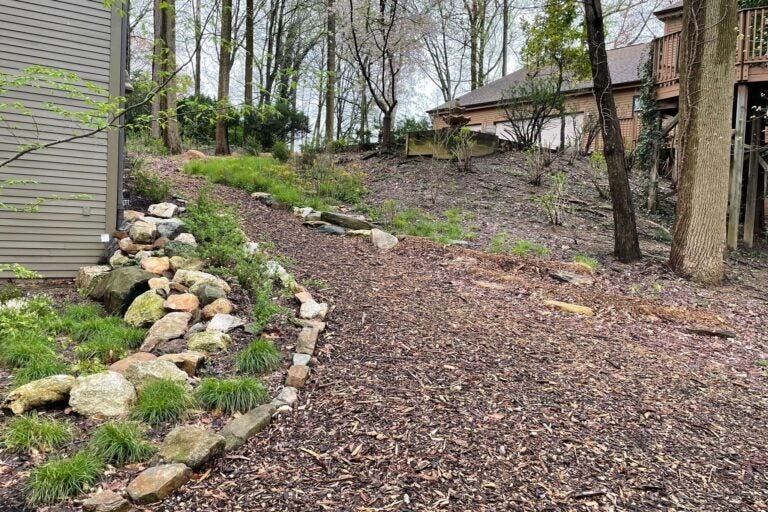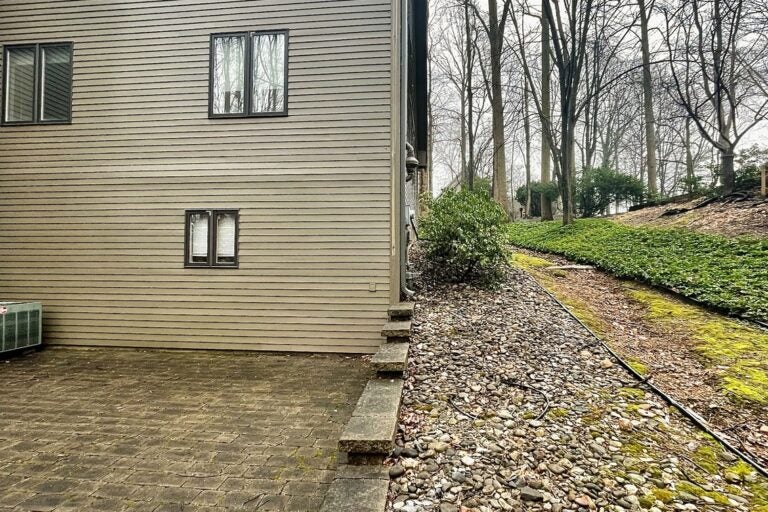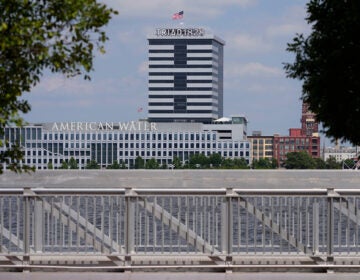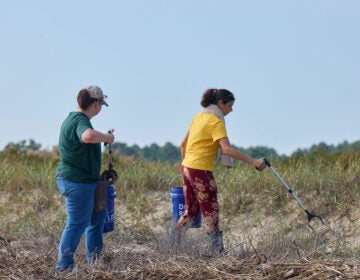‘Catch the Rain’ program helps residents prevent stormwater runoff in White Clay watershed
Runoff from development, roofs, driveways and lawns cause some of the greatest amounts of pollution in the White Clay watershed.
Listen 1:54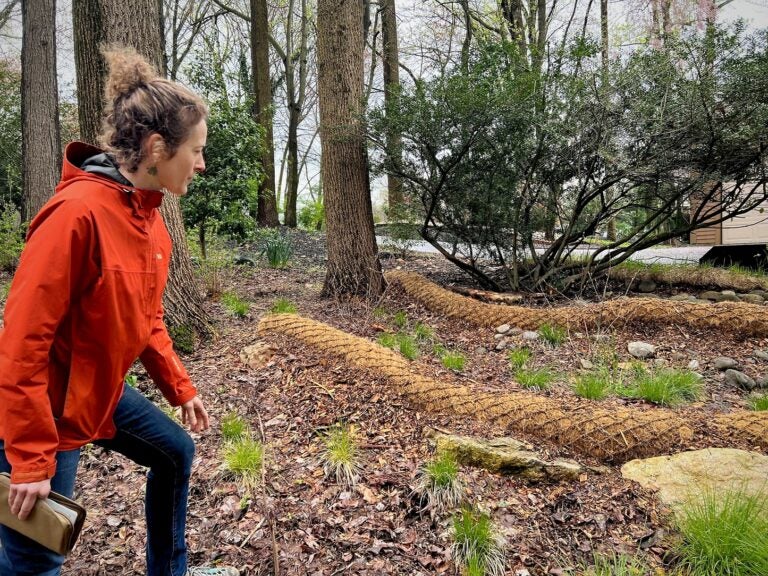
Lucy Dinsmore, a landscaper who helps run the Catch the Rain program, helped a couple add native plants, build a pathway made of wood chips and install buffers to soak up and slow down water. (Zoë Read/WHYY)
From Philly and the Pa. suburbs to South Jersey and Delaware, what would you like WHYY News to cover? Let us know!
Every time the rain poured down in Landenberg, Pa., Molly and Kyle Chappell’s basement flooded. The water problem became increasingly concerning as mold grew, and their home began to smell musty.
Any time the couple came home after or during a rainstorm, they had to jump over a giant puddle to reach the front door.
About two years ago, they heard about Catch the Rain, a program that helps homeowners find ways to soak up stormwater on their properties and prevent pollution from entering the White Clay Creek watershed.
The Chappells installed an underground French drain that carries water from their roof and driveway to a rain garden, which collects and soaks up water.
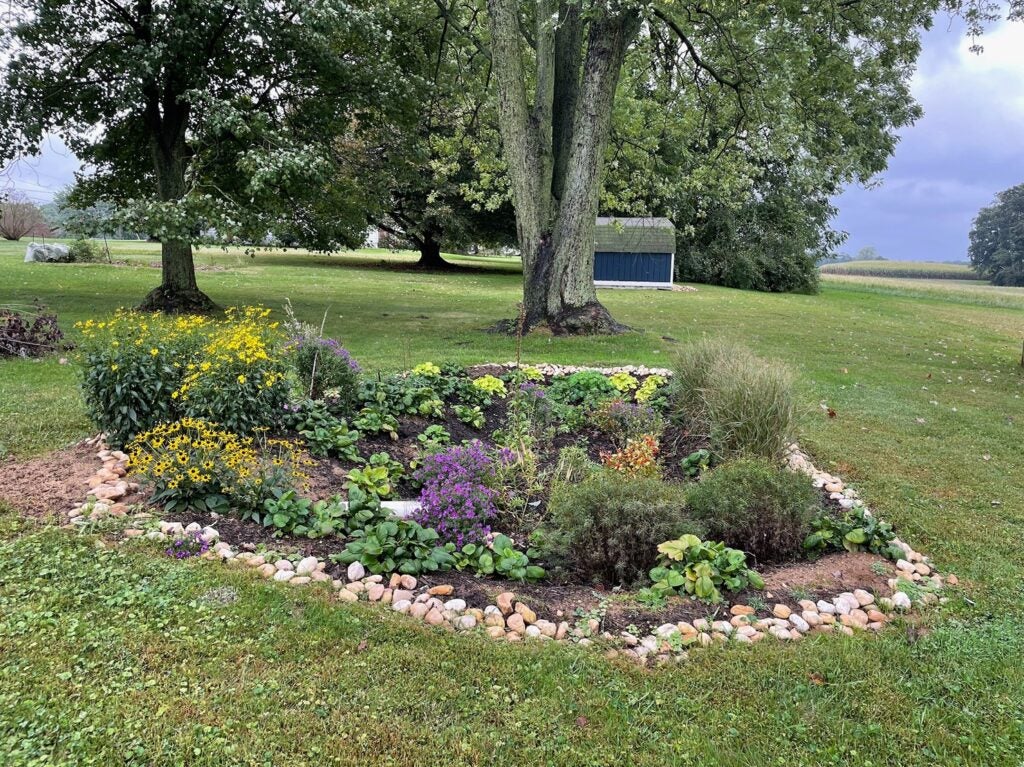
“It felt really good the first time we got a horrible rain and nothing came into the basement,” Molly Chappell said. “It was great.”
Intense rainfall has increased in the Philadelphia region, and with climate change, scientists predict it to worsen over time.
Celebrating Earth Week
More related reads from WHYY News and WHYY’s “The Pulse”
Heavy rainstorms not only threaten properties, but stormwater runoff can pollute waterways that fish and wildlife rely on, and where residents get their drinking water. Much of the pollution that flows into creeks comes from development, driveways, roofs and even lawns, said Shane Morgan, who runs the Catch the Rain program.
“When rain hits the ground and moves across the landscape, it carries everything with it to the creek — all pollutants,” she said. “Whereas the soil, and the microbes that live in the soil, and the plants that grow in these garden areas can help break down some of them.”
Residents who live in the White Clay watershed can apply to the program, which provides a 50/50 cost share for the work, and a rebate after completion.
Nearly 130,000 residents in New Castle County, Del., and Chester County, Pa., live within the watershed, which is a major drinking water source, provides habitat for species such as the federally threatened bog turtle, and offers trout fishing opportunities.
The watershed is part of the National Wild and Scenic Rivers System — a federal initiative that protects rivers proven to have exceptional natural, cultural and recreational features.
The White Clay Wild and Scenic Program, along with the Brandywine Conservancy, created Catch the Rain because stormwater is the largest source of pollution to White Clay Creek — and because 88% of land in the watershed is privately-owned.
“We’re looking at where the stormwater that’s being generated by that property owner is going and how we can help keep it on site, as opposed to what people want to do, which is send it away,” Morgan said.
Jane Thomas and Richard Alford said they’ve seen the benefits of the program, which is mostly funded by the National Park Service. The couple’s Newark, Del. home was a haven for pools of water to settle in. The house is built into a hillside and is surrounded by steep slopes — including the neighbor’s driveway.
Lucy Dinsmore, a landscaper who helps run the program, helped the couple add native plants, build a pathway made of wood chips and install buffers to soak up and slow down the water.
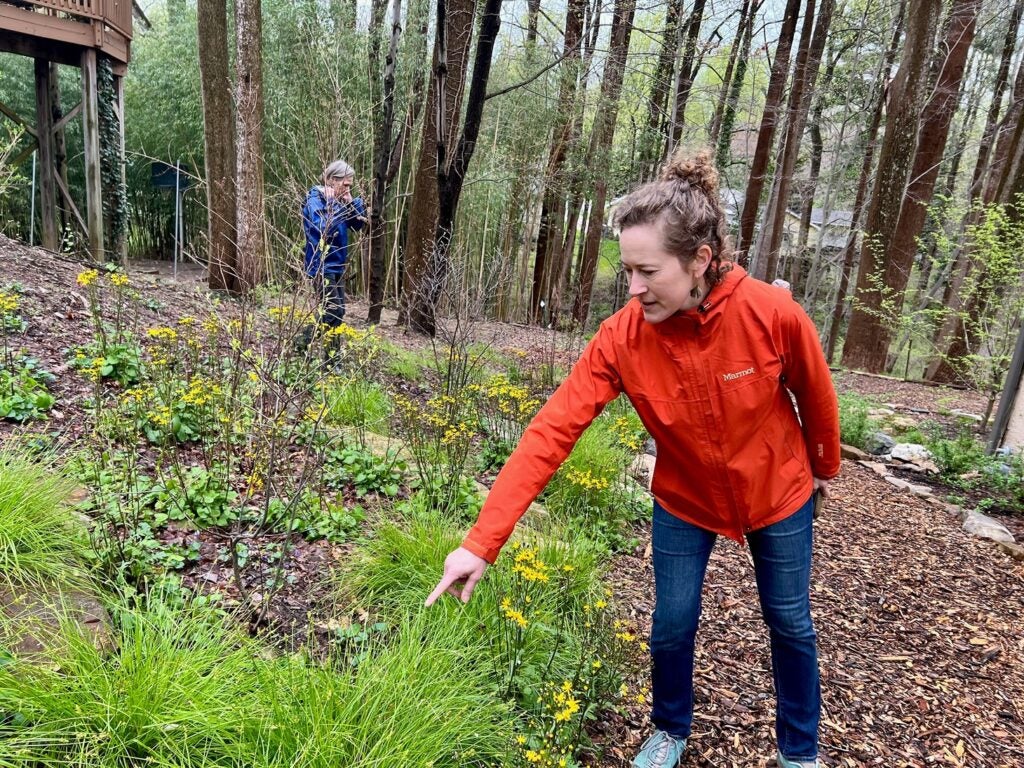
“We did that by sculpting the earth, creating little pools so that the water could settle, and then planting it with lots of ground cover,” she said. “So we have different sedges and we have plants that really like being wet.”
Thomas and Alford say they’re no longer faced with an 8-foot puddle outside their house.
“We don’t see the rivers of water. We don’t see the puddles of water,” Thomas said. “We see more wildlife, particularly birds and insects.”
Dinsmore said she encourages people to allow their property to thrive in its natural element, and consider reducing turf grass, which has shallow root systems that don’t soak up water.
“Think about where you live. If you live near woodland or if your area wants to be a woods, then grow more trees,” she said. “Instead of the lawn being the main attraction, maybe use that lawn for entertaining — but have the lawn be a woodland or a meadow.”

Get daily updates from WHYY News!
WHYY is your source for fact-based, in-depth journalism and information. As a nonprofit organization, we rely on financial support from readers like you. Please give today.



